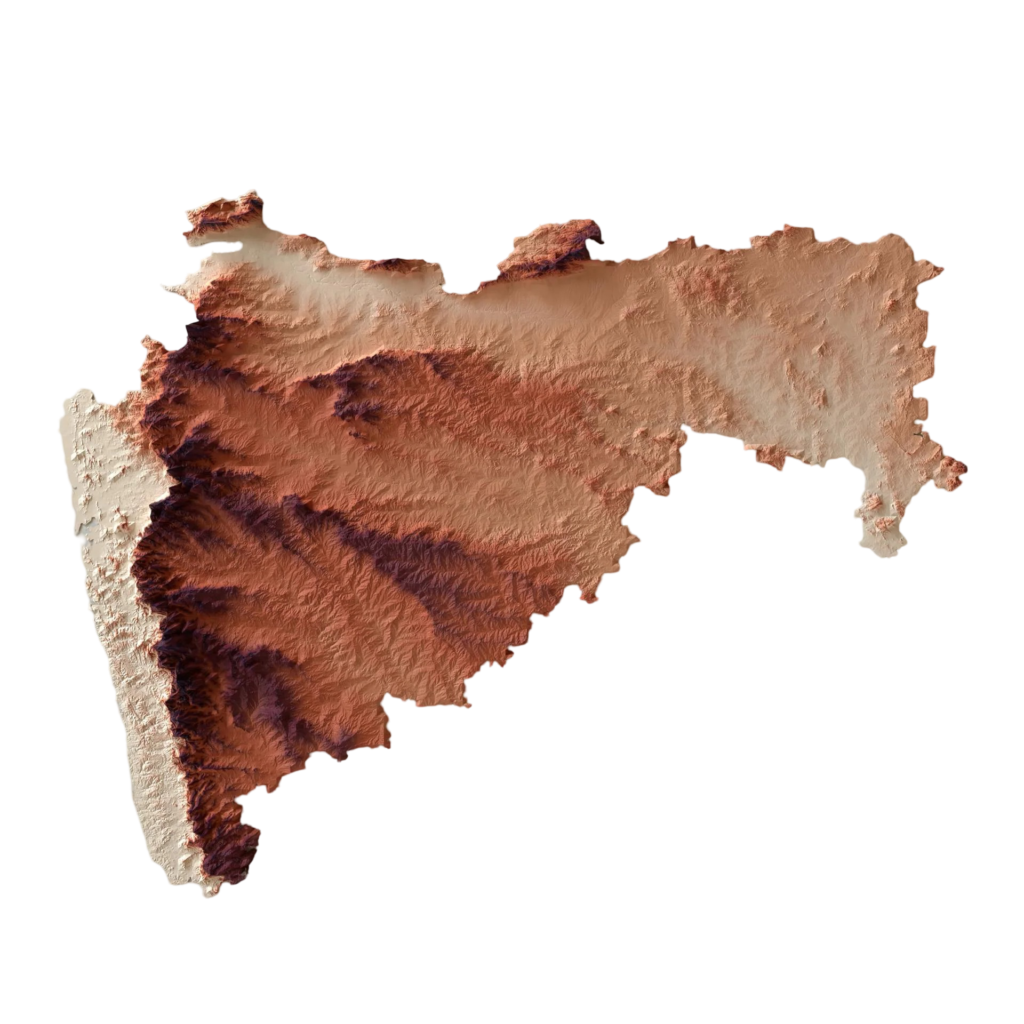Maharashtra is one of India’s most vibrant and diverse states, located in the western part of the country. Known for its rich history, diverse geography, vibrant culture, and promising future, Maharashtra plays a significant role in India’s past, present, and future.
History of Maharashtra
Maharashtra’s history is long and storied, dating back to ancient times. The name “Maharashtra” is derived from the words ‘Maha’ meaning great and ‘Rashtra’ meaning nation or region.
Ancient and Medieval Period
The region was once part of the Maurya Empire under Emperor Ashoka around the 3rd century BCE. Following the decline of the Mauryas, the Satavahanas, also known as the Andhras, ruled Maharashtra for about four centuries, making significant contributions to trade and culture.
From the 6th to the 8th centuries, the Chalukya and Rashtrakuta dynasties held power. The Rashtrakutas are especially known for their rock-cut temples at Ellora, a UNESCO World Heritage site.
The Maratha Empire
The most notable period in Maharashtra’s history began with the rise of the Maratha Empire in the 17th century under the leadership of Chhatrapati Shivaji Maharaj. Shivaji’s innovative military tactics and administrative reforms laid the foundation for a powerful kingdom. The Marathas challenged the Mughal Empire’s dominance, and under leaders like Peshwa Baji Rao I, their influence extended across a large part of India.
British Rule and Independence
In the 19th century, Maharashtra came under British colonial rule. This period saw the growth of Mumbai (then Bombay) as a major trade and administrative center. The state was also a significant center of the Indian independence movement, with leaders like Bal Gangadhar Tilak playing a crucial role.
In 1960, the present state of Maharashtra was formed, carved out from the Bombay State based on linguistic lines, with Mumbai as its capital.
Geography of Maharashtra
Maharashtra is the third-largest state in India by area and the second-most populous. Its diverse geography includes coastal regions, mountain ranges, and plateau lands.
Western Ghats
The Western Ghats, also known as the Sahyadri range, run parallel to the coast and are known for their rich biodiversity. These mountains are home to several hill stations like Mahabaleshwar, Lonavala, and Matheran, which are popular tourist destinations.
Coastal Plains
The Konkan coast stretches along the Arabian Sea and is famous for its beautiful beaches, coconut groves, and lush greenery. Cities like Mumbai and Ratnagiri are located in this region.
Deccan Plateau
The Deccan Plateau covers much of the state’s interior. This region is known for its fertile soil and is a significant agricultural area, producing crops like sugarcane, cotton, and pulses. The plateau also has several historic cities like Pune, Aurangabad, and Nagpur.
Culture of Maharashtra
Maharashtra’s culture is a blend of various traditions, reflecting the state’s diverse history and population. The state is known for its festivals, food, art, and literature.
Festivals
Ganesh Chaturthi is the most widely celebrated festival in Maharashtra, marked by grand processions and elaborate idols of Lord Ganesha. Other major festivals include Diwali, Holi, and Makar Sankranti.
Cuisine
Maharashtrian cuisine is known for its variety and flavor. Traditional dishes include puran poli (sweet flatbread), vada pav (a spicy potato fritter sandwich), and bhakri (a type of flatbread). The use of coconut, peanuts, and spices is common in many dishes.
Arts and Literature
The state has a rich tradition of classical music and dance, with forms like Lavani and Tamasha being particularly popular. Maharashtra is also home to several renowned literary figures like Jnanpith awardees V. S. Khandekar and Kusumagraj, and the writings of P. L. Deshpande and Vijay Tendulkar have left a significant mark on Indian literature.
Film Industry
Mumbai, the capital city, is the heart of the Indian film industry, popularly known as Bollywood. The city produces the largest number of films in India and is home to many famous actors, directors, and musicians.
Future of Maharashtra
Maharashtra is poised for a bright future, driven by its economic strength, infrastructure development, and educational advancements.
Economic Growth
As one of the wealthiest states in India, Maharashtra contributes significantly to the country’s GDP. Mumbai is the financial capital of India, hosting major financial institutions, stock exchanges, and multinational corporations. The state is also a hub for information technology, with cities like Pune and Nagpur emerging as important IT centers.
Infrastructure Development
The state government has been focusing on improving infrastructure. Projects like the Mumbai Metro, Pune Metro, and the Mumbai-Nagpur Expressway are set to enhance connectivity and reduce travel time. The proposed Navi Mumbai International Airport is expected to further boost the state’s global connectivity.
Education and Innovation
Maharashtra is home to some of India’s top educational institutions, including the Indian Institute of Technology (IIT) Bombay, the Tata Institute of Social Sciences (TISS), and the University of Mumbai. The state’s focus on education and research is driving innovation, particularly in technology and healthcare.
Environmental Sustainability
Given its diverse geography, Maharashtra faces environmental challenges such as deforestation and pollution. The state is investing in sustainable practices, including renewable energy projects like solar and wind power, and initiatives to preserve its forests and wildlife.
Conclusion
Maharashtra is a state of contrasts and opportunities. From its rich history and cultural heritage to its modern economic powerhouses and future-focused initiatives, Maharashtra embodies the spirit of progress while preserving its unique identity. As it continues to grow and develop, the state remains a vital part of India’s journey towards a prosperous future.
